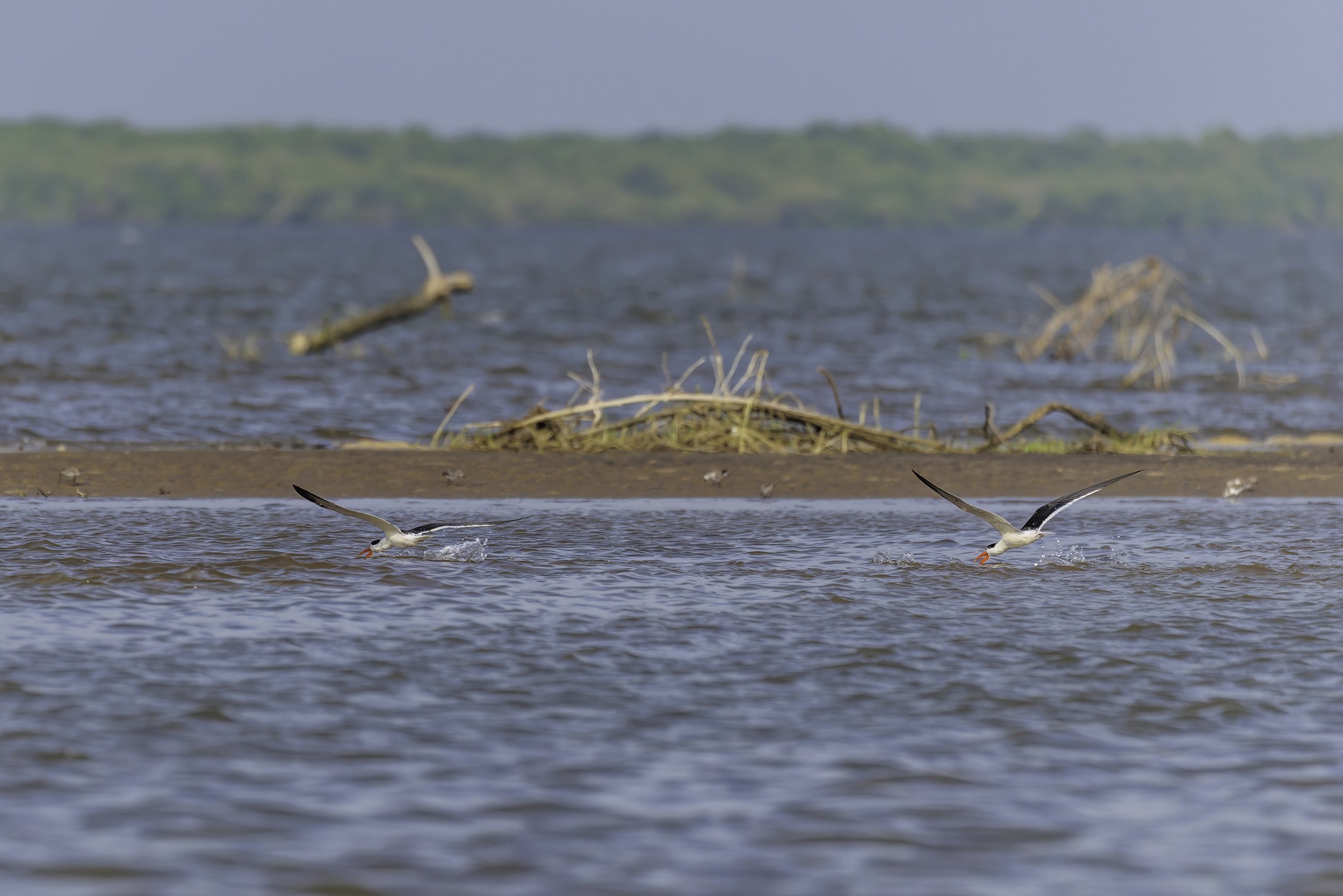Indian Skimmer
Rynchops albicollis
ENDANGERED
Bhairavapalem Mudflats, Coringa Wildlife Sanctuary
The Indian Skimmer (Rynchops albicollis) is recently up listed as Endangered on the IUCN Red list. It has seen a substantial decline throughout South East Asia. Formerly widely distributed across the Indian Subcontinent it is presently confined only to India, Pakistan, Bangladesh, Nepal and Myanmar and considered extinct in Laos, Cambodia and Vietnam. The Indian Skimmer is now almost completely restricted to India as a breeding bird, with only occasional breeding in western Bangladesh. BirdLife International 2021 estimated the total population to be between 3,700 and 4,400 individuals, roughly equating to 2,450-2,900 mature individuals. This great decline has primarily been because of loss and degradation of riverine habitat across South East Asia, damming of rivers, compromised flow regimes of rivers, low nesting success due to predation and trampling of eggs and chicks.
I first got word of the Indian Skimmer a few weeks back from the Lower Manair Dam in Karimnagar. I immediately set off with the hope of documenting it but unfortunately there were only about 25-30 individuals and there was no position or good angle available to photograph them from close proximity. Subsequently I heard that they were being seen infrequently leading to the assumption that the flock had, in all likelihood, found a better nesting spot somewhere between the Lower and Mid Manair dams. So unless the location was confirmed it would be nigh impossible to accomplish a good set of photographs and/or videos. So I sought direction elsewhere.
I was advised by some excellent bird watchers to head, instead, to the Konaseema region - the triangular region located in the delta of the mighty Godavari River, fenced on one side by the volatile Bay of Bengal and on the other two sides by the tributaries of the Godavari - the Vruddha Godavari, Vasishta Godavari, Gautami, and Nilarevu. So off I went again in search of the fast disappearing Indian Skimmer - also known as the Indian Scissors-bill.
The Konaseema Delta
The Konaseema delta in Andhra Pradesh, India, is known for its natural beauty and fertile land. The delta is located in the Dr. B. R. Ambedkar Konaseema district, between the Bay of Bengal and the Godavari River's tributaries. The Godavari splits into two branches, the Gautami and Vasishta, forming a group of islands called Konaseema. It is nicknamed "God's own creation" given the similarities with the Kerala Backwaters. The delta is also known as the "Rice Bowl of India" because of its fertile land, its lush greenery, coconut groves, paddy fields, and mango orchards. It also has mangrove forests in the northeast of the district which form part of the Coringa Wildlife Sanctuary.
After crossing the city of Rajahmundry, the mighty Godavari bifurcates into two tributaries, the Vruddha Godavari and the Vasishta Godavari, which then further splits into the Gautami and the Nilarevu. Similarly, the Vasishta splits into two branches, the Vasishta and the Vainateya. These branches form a delta 170 km long along the coast of the Bay of Bengal. This delta makes up the Konaseema region. Amalapuram is the largest town in Konaseema, followed by Razole, Ravulapalem, Kothapeta, and Mummidivaram. The arched entrance to the Konaseema region was intended to complement the natural colors of the region's land and plant life.
There are numerous and quaint fisherfolk villages with settlements that are over 800 years old. The delta also has serene temples, like the Draksharamam temple, that add to its spiritual allure. Some of the sites of religious significance include
Ainavilli - with its glorious Siddhi Vinayaka Temple;
Antarvedi - said to be the second Varanasi with its Sri Lakshmi Narasimha Temple;
Ryali - the site of the renowned Jagan Mohini Kesava Swamy Temple with its exquisite idol, made of black stone depicting Maha Vishnu and Mohini on its front and rear sides;
Mandapalli - said to be location of the holy ashram of Maharshi Dhadhichi who made the supreme sacrifice of donating his spinal cord for the divyastra - Vajrayudha wielded by Lord Indra;
Vadapalli - home to two major temples: the Sri Meenakshi Agasteswara Swami Temple and Sri Lakshmi Narasimha Swami's Temple (also known as Yedu Sanivaramulu Venkanna);
Appanapalli - known as the second Tirupati of Konaseema and considered to be the abode of Lord Bala Balaji. The temple is said to be self-manifested and is located on the banks of the Godavari River;
Muramalla - home to the Bhadra Kali Sametha Veerabhadra Swamy temple, a place where devotees believe that Lord Shiva and Bhadrakali married in the Gandharva style;
Palivela - known for the idol of Sri Uma Kouppulingeswara Swamy, which is believed to have been installed by Maharshi Agastya himself;
Vanapalli - one of the most prominent sanctuaries dedicated to the goddess Pallalamma in the region. According to legend, the temple's origins trace back to a group of travelers who were carrying a statue of the goddess Pallalamma with them. When they arrived in Vanapalli and found the statue too heavy to continue carrying, they interpreted it as a sign that the goddess wished to stay there. Subsequently, they constructed a temple in her honor, which has since become a revered place of worship. The temple is renowned for its annual festival, known as Pantala Jatara, which occurs during the month of Baisakh (April/May).
It has a rich culture of festivities and celebrations, including the Sankranthi and Kanuma festivals in January. It also has indigenous dance forms like Veeranatyam and Vilasini Natyam. The delta is known for its culinary delights, including dals, pickles, dosas, upma, persarattu, idli, jack fruit curry, and brinjals cooked with cashew fruit. The nearest airport is Rajahmundry, and the closest railhead is Narsapur. The best way to explore the delta is by road, as the NH-16 provides scenic views.
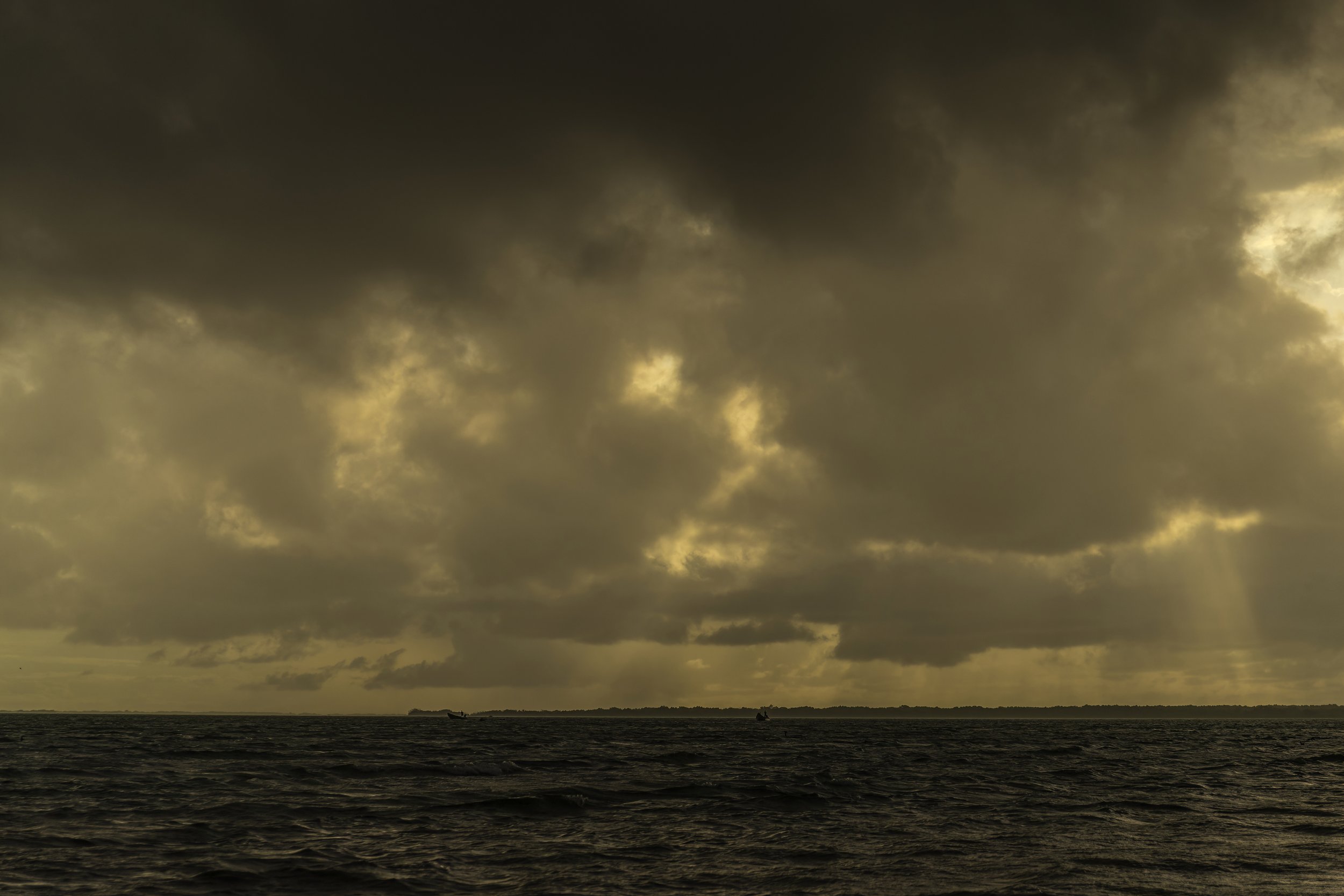
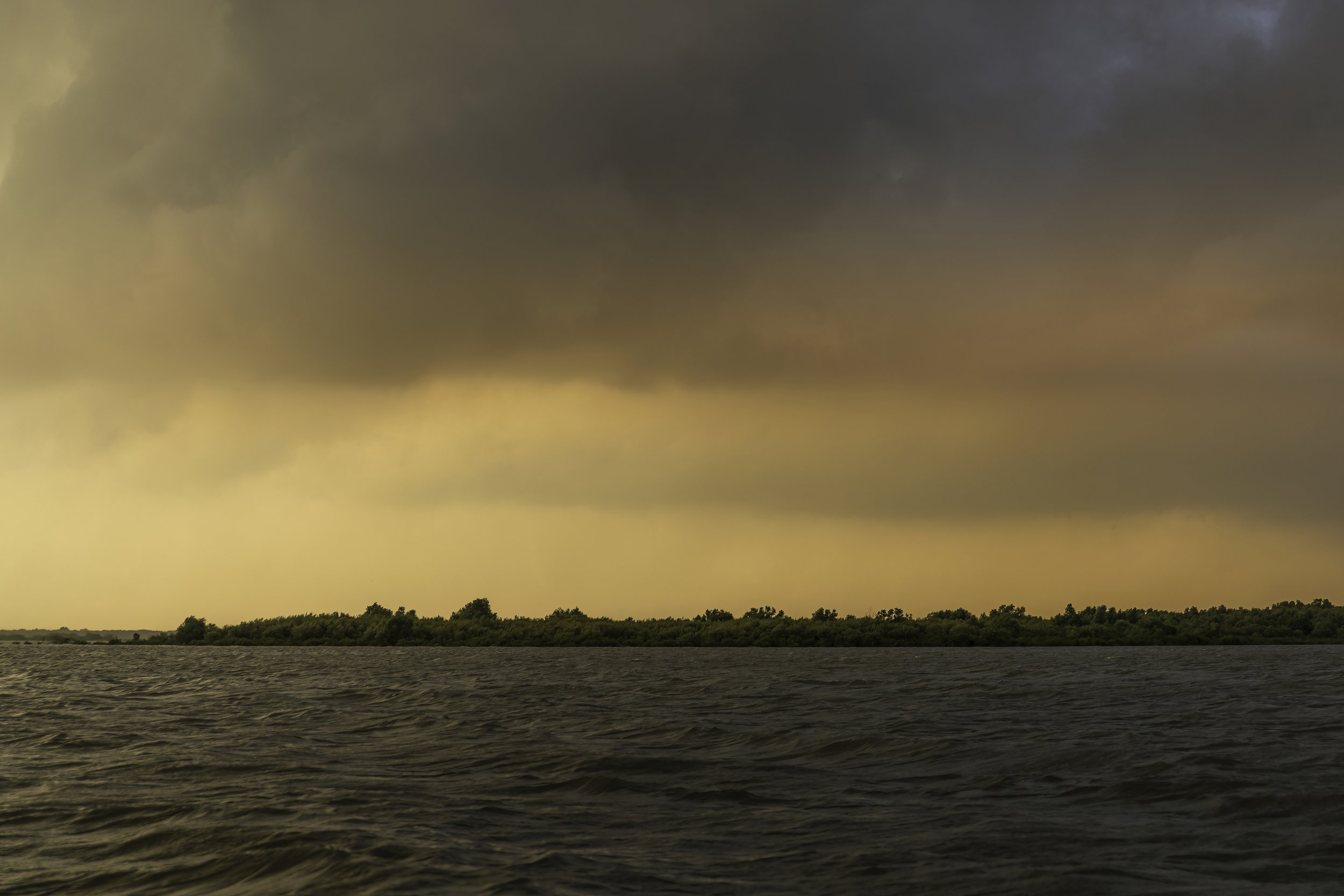
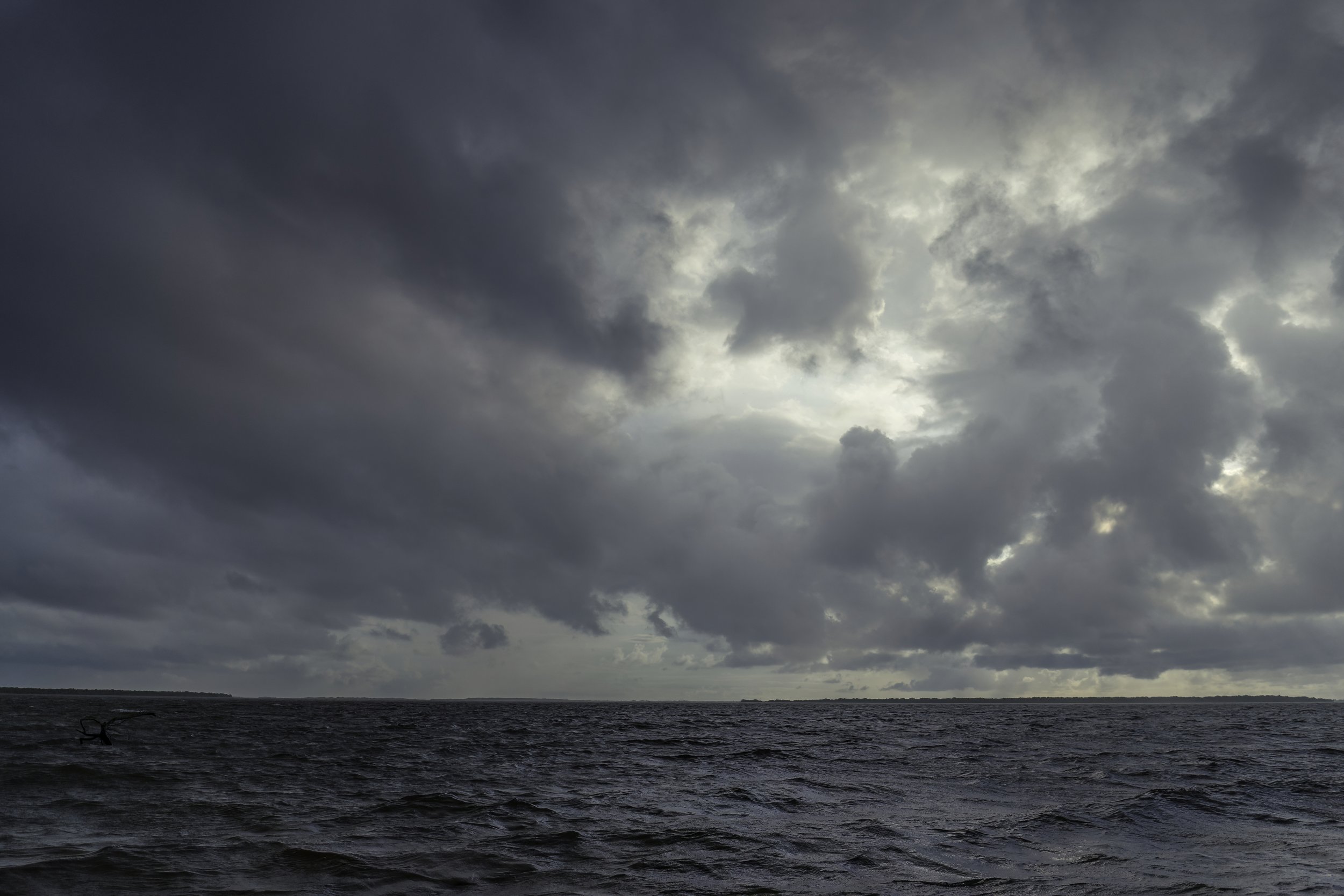
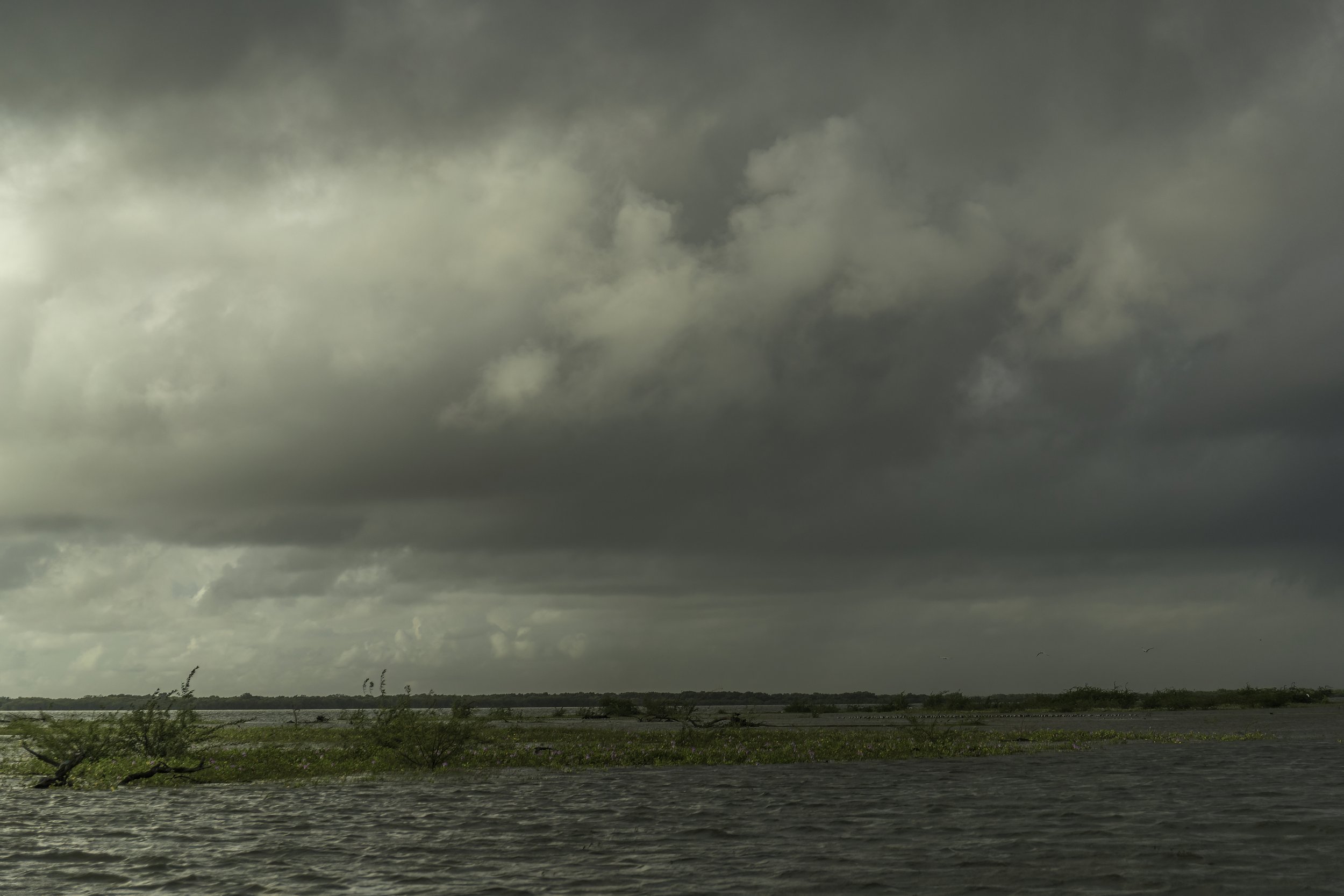
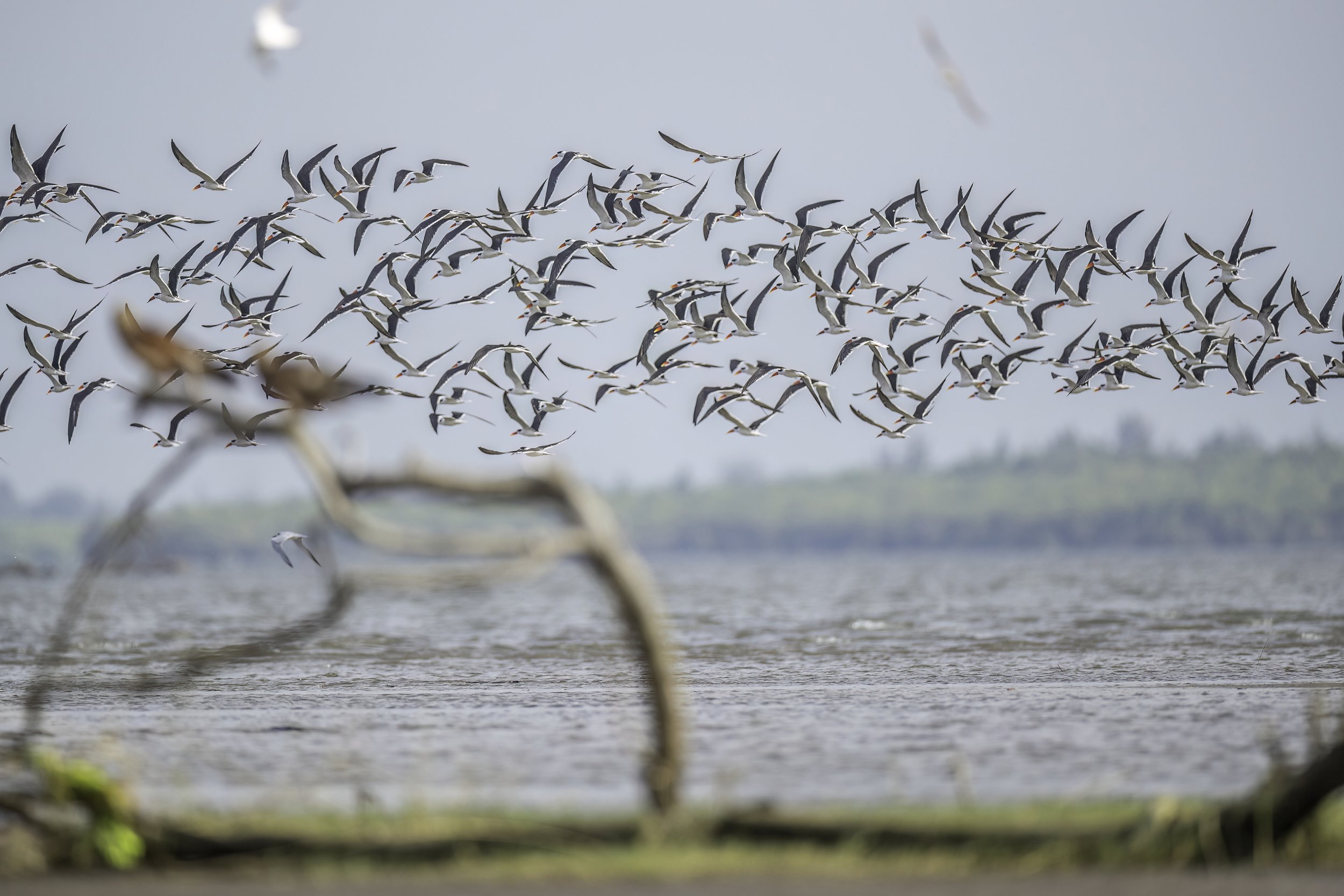
Bhairavapalem Mudflats, Coringa Wildlife Sanctuary
At a distance of about 15 Km from Kakinada on the Kakinada Yanam Road lies the Coringa Wildlife Sanctuary named after the tiny hamlet of Coringa in the East Godavari District of Andhra Pradesh. A part of the Godavari River Mangroves, it was declared a wildlife sanctuary by the government of Andhra Pradesh vide G.O.Ms.No – 484, Forests and Rural Development (For.III) Department dated 5-7-1978 to conserve the mangrove vegetation of the estuary, extending in an area of about 235 km². It is located between 16°30′ to 17°00′ N latitudes and 82°14′ to 82°23’ E longitudes. Mangroves are salt tolerant forest ecosystems of tropical and sub – tropical intertidal regions of the world. They normally occur between high water level and near mean sea level along sheltered shores, estuaries, tidal creeks, back-waters, lagoons, marshes and mud-flats.
Where conditions favour the Mangroves may form extensive and productive forests in the sheltered coastal lines. The mangroves contain a highly specialised community of plants associated with animal species which are not capable of surviving in any other situations. Mangroves occur in Andhra Pradesh in the estuaries of Krishna and Godavari rivers. Andhra Pradesh has an area of 582 km² of Mangrove forests, accounting for about 9% of local forest area of the State, which amounts to just about 2% of the local geographical area of the State. Even the entire land under mangroves do not contain fully the Mangrove vegetation. The area includes forest of open banks. sandy patches and mud-flats.
The Coringa Mangroves is the third largest stretch of mangrove forests in India with 24 mangrove tree species and more than 120 bird species. It is home to the Critically Endangered White-backed Vulture and the Long billed Vulture. The coast of the Coringa Wildlife Sanctuary is also a breeding ground for the Vulnerable Olive Ridley Turtles. Mangroves are a group of trees and shrubs that live in the coastal intertidal zone, with a dense tangle of prop roots that make the trees appear to be standing on stilts above the water. This tangle of roots allows the trees to handle the daily rise and fall of tides; hence, the mangrove forest gets flooded at least twice per day. The roots also slow the movement of tidal waters, causing sediments to settle out of the water and build up the muddy bottom. Mangroves also stabilize the coastline, reducing erosion from storm surges, currents, waves, and tides. The intricate root system of the mangrove also makes the forest attractive to fish and other organisms seeking food and shelter from predators. About half of the area of the Coringa Sanctuary is the backwater, which includes a sand pit of 18 km length. The rivers Coringa and Gaderu and their deltaic branches intersect the region, along with other water channels. This forms about 335.7 km² of marsh vegetation.
Some of the other stunning species from the mudflats are featured in the gallery below.

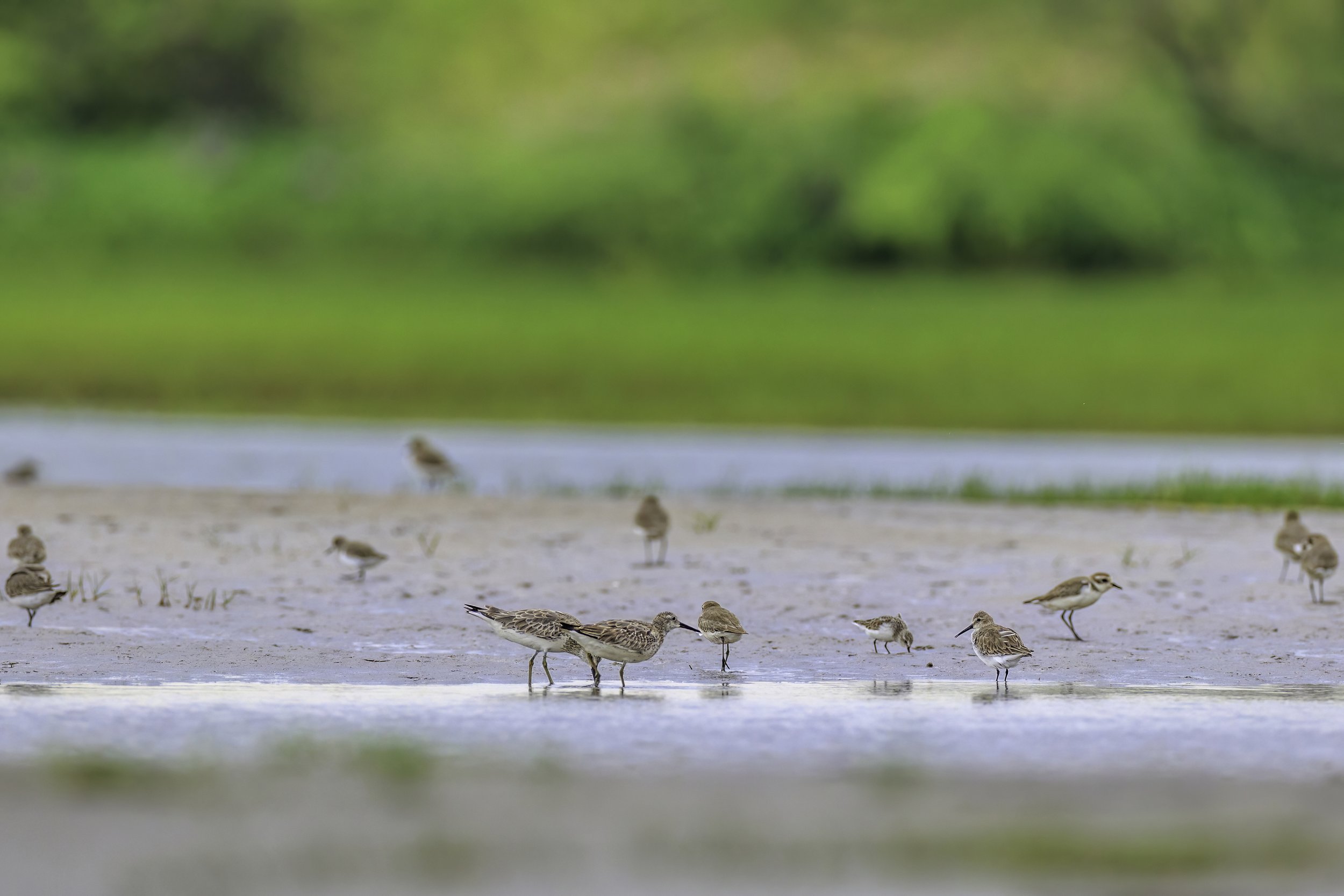

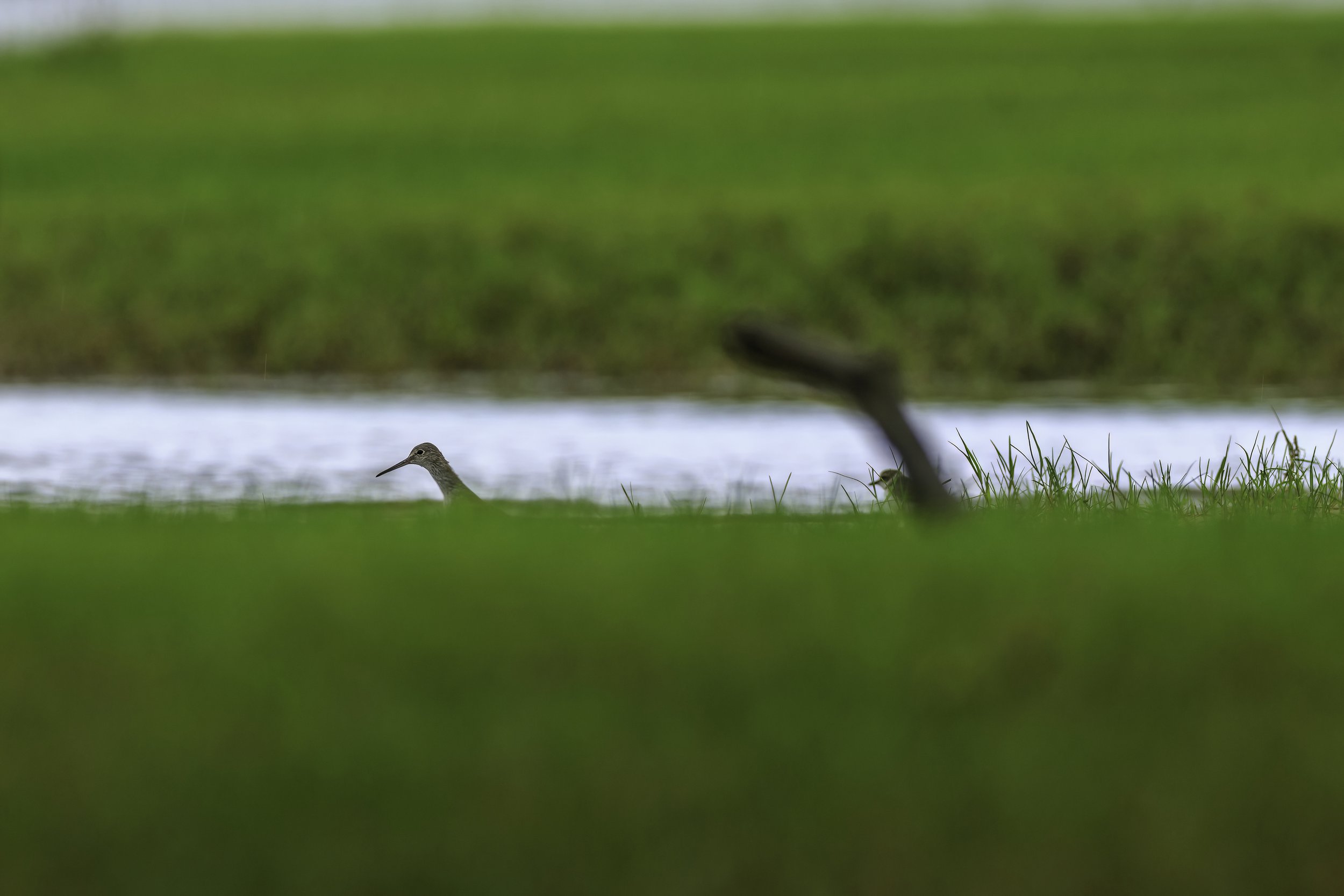
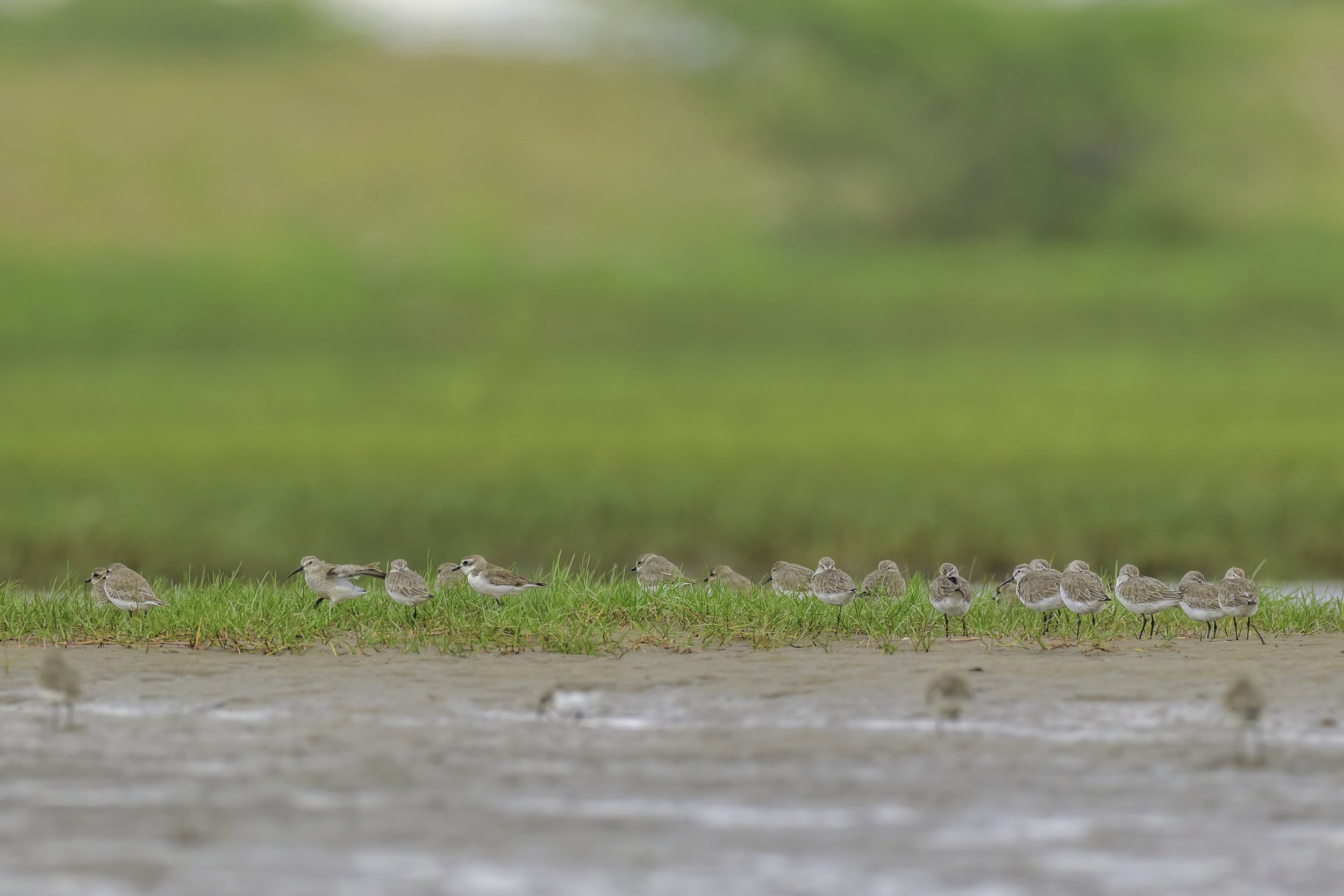

The Sanctuary has rich mangrove vegetation with thirty five species of plants belonging to twenty four families. The sanctuary possesses a wide variety of birds, because of the feed available in the backwaters of the mangrove forest. During low tide, some of the areas are exposed (elevated mud flats) having small fishes, shrimps and mollusks. These attract avifauna for feeding. Some Critically Endangered species like the White-backed Vulture and the Long billed Vulture are present in the sanctuary. The Painted Stork, Oriental White Ibis, Ferruginous Pochard found in the sanctuary are Near Threatened species, and Spot-billed Pelican is a Vulnerable species. Significant populations of waders and mangrove birds are also present. Altogether, almost 50 migratory species and more than 120 species of birds have been reported. Apart from the avian fauna, the sanctuary has a fair population of Golden Jackal, Sea Turtles and fishing cats, and a healthy breeding population of the smooth-coated otter. The sanctuary has an 18-km long sand pit where Olive Ridley Sea Turtles nest from January to March every year. Efforts to reintroduce the Saltwater Crocodile into the sanctuary during the 1970s met with failure and the species has not been present within the sanctuary for over 30 years.
Located on the Gautami tributary of the mighty Godavari, the Bhairavapalem Mudflats are named after the village of Bhairavapalem and are subject to tidal water, a habitat for crabs like mud crabs. Bhairavapalem is also the name of a Reserve Forest in the Coringa Wildlife Sanctuary. As it is easy to access and in close vicinity to the port town of Kakinada and nearby villages, which are largely inhabited, the mangroves are being exploited by the local population. A socio-economic study by the Indian Bird Conservation Network found that most of the local fishermen harvest wood in the forest and depend heavily on the mangroves for their basic needs. The species Avicennia officinalis and Avicennia marina are being used for fuelwood.
The existence of otters has been hit badly because of increased poaching and habitat destruction. The increasing industrialization of the Godavari Delta, increasing aquaculture activities and fishing pressure have severely affected the population of otters. The Andhra Pradesh Forest Department has taken steps to ensure conservation of otters and for afforestation of mangroves in the sanctuary.
Indian Skimmer/ Indian Scissors-bill
The Indian Skimmer or Indian Scissors-bill (Rynchops albicollis) is one of the three species that belong to the skimmer genus Rynchops in the family Laridae. They are somewhat tern-like but like other skimmers, have a short upper mandible and the longer lower mandible that is ploughed along the surface of water as the bird flies low over the water to pick aquatic prey. It is found in southern Asia, where it is patchily distributed and declining in numbers. They are mainly found in rivers or estuaries. They are very brightly marked in black, white and orange, making them difficult to miss.
It is an unmistakable bird - black above and white below with a bright orange bill (the lower mandible is longer than the upper). It favors slow-moving rivers with sandbars, on which this species forms noisy colonies, often in association with terns. It flies rapidly on long angular wings, “skimming” the water with the extended lower mandible giving a sharp “kip kip.”
This bird has a black cap and orange bill that contrasts with the white body. With its long wings it looks tern-like and is about 40–43 cm long with a wingspan of 108 cm. The upper parts of the body are dark black and the underparts are white. The black cap on the head leaves the forehead and nape white. The wings are long and pointed with a white trailing edge. The short, forked tail is white with blackish central feathers. The long, thick bill is orange with a yellow tip and, like the other skimmers, has a lower mandible which is longer than the upper mandible. The legs and feet are red. The lower bill is knife-like and flexible and the tip appears truncated. Young birds have bills that appear normal and with age the lower mandible grows. The upper mandible is capable of considerable mobility. Non-breeding adults are duller and browner than breeding birds. Juveniles are grey-brown above with pale fringes to the feathers on the back and wings. The head has more white than in adult birds and the bill is orange-brown with a dark tip. It has a high, nasal, screaming kyap-kyap call but is usually very silent. The Black Skimmer of the Americas is larger with a black tip to the bill. The African Skimmer is smaller with more black in the tail and no white collar. In older times the Indian Skimmer was also known as the Indian Scissors-bill.
It is found on large rivers and lakes, swamps and coastal wetlands such as the Godavari estuaries. It is most common on freshwater, particularly during the breeding season. Breeding colonies are on islands or sandy spits, usually in rivers. Its range has become increasingly fragmented in recent decades. It is still found in parts of Pakistan in the Indus river system of Kashmir and northern and central India along the Ganges, Bangladesh and Burma and formerly occurred in Laos, Cambodia and Vietnam. It is a scarce non-breeding visitor to Nepal and has occurred as a vagrant in Oman and central Thailand with old records from Iran and China. At present, the last strongholds of the Indian Skimmer are India, and to some degree Bangladesh. They are more widespread in winter and are found in coastal estuaries of western and eastern India as far south as Karwar on the western coast and; Chennai and Pondicherry on the eastern coast exist.
Breeding colonies are known from the Chambal river area, an area that is of importance for the Gharial. Sand banks are important for the nesting of Gharials. They have also been documented as breeding on the banks of the Mahanadi river at the Munduli barrage, Chandaka Wildlife Division in Cuttack.
The birds forage for food by flying low over the water with the bill open and the lower mandible skimming through the water. When a fish is encountered, it moves up the lower mandible and the bird raises the upper mandible and snaps it with a movement of the head. I was hoping I would see these birds really skimming during my stay there but unfortunately they didn’t skim much and when they did they were far away and facing away from me. They forage in small flocks and often associate with terns. They feed mainly on fish but also take small crustaceans and insect larvae. They often feed at dusk and can be very nocturnal and it was at dusk we saw them skim the most.
The breeding season is mainly March and May. They breed in colonies of up to 40 pairs, often with terns and other birds. The nest is a simple scrape on the ground mainly on open sand banks that provide unobstructed views of any oncoming predators. The eggs are buff or white with brown blotches and streaks. There are three to five eggs in a clutch. They may indulge in a low-level of inter-specific brood parasitism, laying their eggs in the nests of river terns (Sterna aurantia). The birds tend to incubate the eggs more during the cooler hours of the day and are often away from the nest during the hotter parts of the day. Incubating adults are said to indulge in belly-soaking behaviour to cool the eggs. A bird at nest was once observed to pick up (and drop into water) an intruding chick of a river tern using its leg.
More widespread in winter, the Indian skimmer is found in the coastal estuaries of western and eastern India. It occurs primarily on larger, sandy, lowland rivers, around lakes and adjacent marshes and, in the non-breeding season, in estuaries and coasts.
The species was formerly widely distributed in the rivers of the Indian subcontinent and along the river systems of Myanmar and Mekong. Records from Laos, Cambodia and Vietnam are mainly from the 19th century and recent records are rare.
The population is now mainly within India and Pakistan and is estimated to be about 6,000-10,000 individuals. The decreasing population has led it to being classed as Endangered by the IUCN. It is threatened by habitat loss and degradation, pollution and disturbance by humans. Most colonies are unprotected but some lie within nature reserves such as National Chambal Sanctuary and the Coringa Wildlife Sanctuary in India.
Major Threats:
Habitat degradation: Exploitation and degradation of rivers and lakes through fishing, transportation, domestic use, irrigation schemes and pollution from agricultural and industrial chemicals are largely responsible for the decline of this species as these factors have reduced reproductive and foraging success.
Excessive and widespread increases in disturbance: The damming of the Chambal River, in upstream Rajasthan, has adversely affected its population at National Chambal Sanctuary, Uttar Pradesh, due to the dropping water levels allowing predators and livestock access to breeding islands (Sundar, 2004).
Predation by corvids like House crows (Corvus splendens), presence of stray and domestic dogs, have been known to decimate breeding colonies (Siddiqui et al., 2007).
Conserving the Endangered Indian Skimmer on the Bhairavapalem mudflat involves a combination of habitat protection, community involvement, and research efforts:
Habitat Preservation:
Implement and enforce strict regulations to protect the Bhairavapalem mudflat and its surrounding habitats.
Identify and safeguard nesting and feeding areas crucial for Indian Skimmers.
Community Involvement:
Raise awareness about the importance of Indian Skimmer conservation among local communities.
Involve local communities in monitoring and protection efforts, making them stakeholders in the conservation process.
Research and Monitoring:
Conduct thorough research on Indian Skimmer behavior, migration patterns, and habitat requirements.
Regularly monitor the population status and identify any emerging threats or changes in the ecosystem.
Habitat Restoration:
Implement habitat restoration projects to enhance the quality of the mudflat and adjacent areas.
Ensure the availability of suitable nesting sites and sufficient prey for Indian Skimmers.
Anti-Poaching Measures:
Implement measures to prevent poaching and disturbance of Indian Skimmer nests.
Collaborate with law enforcement agencies to enforce regulations and protect the species.
International Cooperation:
Collaborate with international organizations and researchers to share knowledge and resources for Indian Skimmer conservation.
Explore partnerships for transboundary conservation efforts if the species migrates across borders.
Education and Outreach:
Conduct educational programs in schools and communities to promote awareness and understanding of Indian Skimmers.
Engage in outreach activities to garner support for conservation efforts.
Research on Threats:
Investigate and address specific threats faced by Indian Skimmers, such as habitat degradation, pollution, or changes in prey availability.
Conservation efforts should be holistic, considering the ecological balance of the Bhairavapalem Mudflats and involving the cooperation of local communities, government bodies, NGOs, and international organizations.
‡‡‡‡‡
Related Posts













